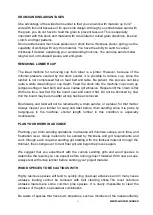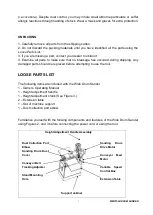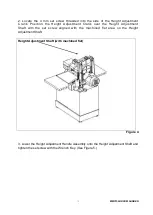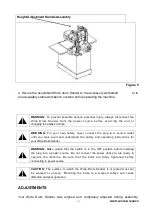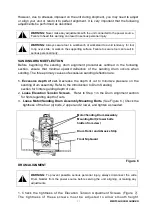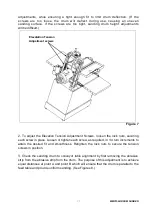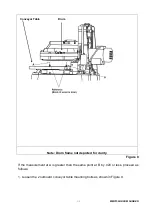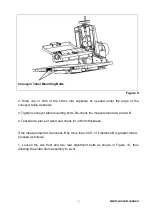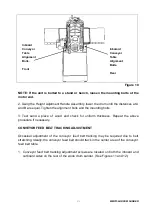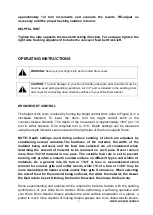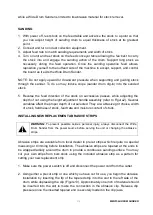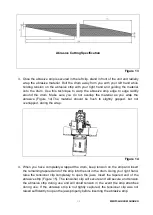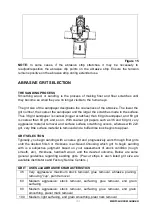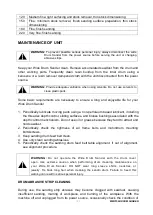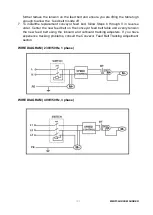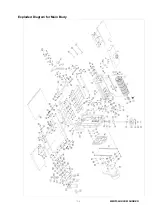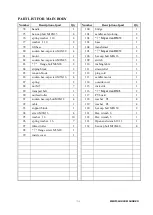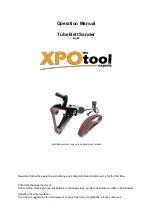
MM3156A DRUM SANDER
20
Figure 15
NOTE:
In some cases, if the abrasive strip stretches, it may be necessaty to
readjust/reposition the abrasive clip points on the abrasive strip. Ensure the tension
remains positive on the abrasive strip during extended use.
ABRASIVE GRIT SELECTION
THE SANDING PROCESS
Smoothing wood, or sanding, is the process of making finer and finer scratches until
they become so small they are no longer visible to the human eye.
The grit size of the sandpaper designates the coarseness of the abrasive. The lower the
grit number, the coarser the sandpaper and the larger the scratches made to the surface.
Thus 36 grit sandpaper is coarser (bigger scratches) than 60 grit sandpaper, and 60 grit
is coarser than 80 grit, and so on. With coarser grit papers such as 36 and 60 grit, very
aggressive material removal and surface surface scratching occurs, whereas with 220
grit, very little surface material is removed and a buffed like look begins to appear.
GRIT SELECTION
Typically, you begin sanding with a coarse grit and progressively work through finer grits
until the desired finish or thickness is achieved.Choosing which grit to begin sanding
with is a subjective judgment based on your assessment of stock condition (rough,
smooth, etc.), thickness, hard/soft wood, and the desired outcome. Below are some
general guidelines regarding sanding grits. (Pre-cut strips in each listed grit size are
available distributors and Factory Service Centers.)
GRIT USES and ABRASIVE CHARACTERISTICS
36
Very aggressive: maximum stock removal, glue removal, abrasive planing,
removing
“cup”, paint removel
60
Medium aggressive: stock removal, surfacing, glue removal, end grain
surfacing
80
Medium aggressive: stock removal, surfacing, glue removal, end grain
smoothing, planer mark removal
100
Medium: light surfacing, end grain smoothing, planr nark removal

